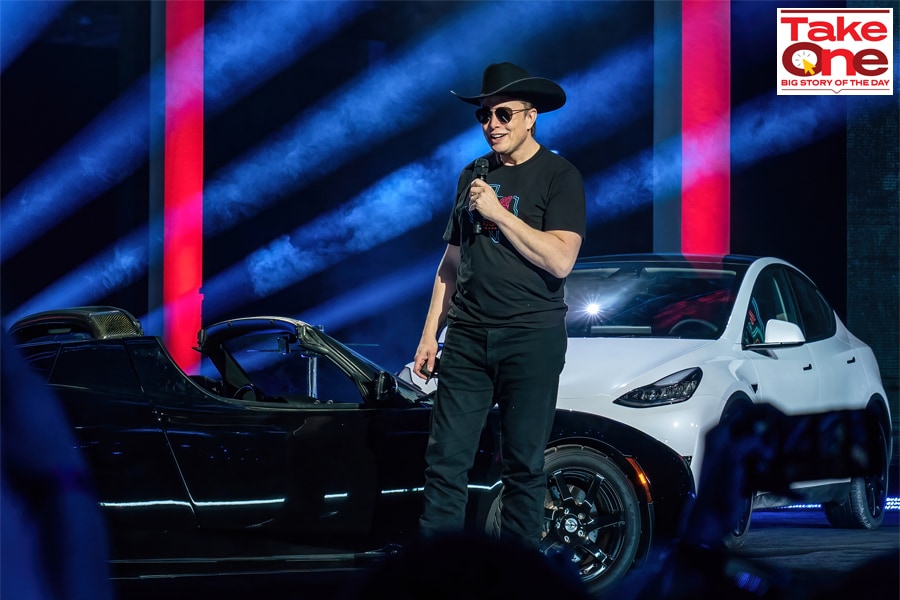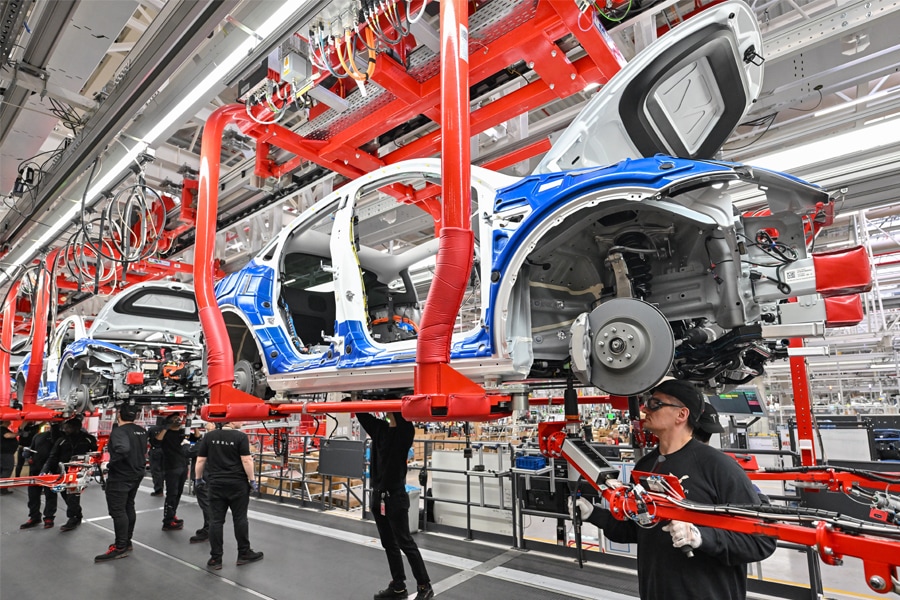
Tesla needs India and India needs Tesla. Now it's all about making it work
After months of gridlock, hopes of Tesla's entry into India have been rekindled with its senior officials flying to Delhi to discuss with the government the company's plans to set up operations in the country. The American automaker's presence here is likely to drive the transformation of the automotive industry toward sustainable and electric mobility
 CEO of Tesla Motors Elon Musk speaks at the Tesla Giga Texas manufacturing "Cyber Rodeo" grand opening party on April 7, 2022 in Austin, Texas. - Tesla welcomed throngs of electric car lovers to Texas on April 7 for a huge party inaugurating a "gigafactory" the size of 100 professional soccer fields.
Image: Suzanne Cordeiro / AFP
CEO of Tesla Motors Elon Musk speaks at the Tesla Giga Texas manufacturing "Cyber Rodeo" grand opening party on April 7, 2022 in Austin, Texas. - Tesla welcomed throngs of electric car lovers to Texas on April 7 for a huge party inaugurating a "gigafactory" the size of 100 professional soccer fields.
Image: Suzanne Cordeiro / AFP
It’s been many months of dilly-dallying.
At first, about a year ago, the Indian government stood steadfast on its demand that if Tesla needed to sell cars in India, it had to set up a local manufacturing facility in the country, home to the third-largest automobile market in the world. Soon after, Elon Musk, the billionaire CEO of Tesla, announced that Tesla will not set up a manufacturing plant in any location where the company was not allowed first to sell and service cars.
The gridlock meant that Tesla’s India plan had been shelved even as India was pitching itself as a global manufacturing hub, and more so as an alternative to China.
Now, a year since Musk went public, hopes of Tesla’s entry into India have been rekindled after senior officials at Tesla flew down to New Delhi to meet with the government to reportedly work out plans for setting up operations in India. “They are very seriously looking at India as a production and innovation base," Rajeev Chandrasekhar, information and technology minister, told Reuters in May.
“We have signalled to them that the government of India is working together (and) will certainly make whatever ambitions they have or investment objective they have in (making their) India (plans) a success," Chandrasekhar added. A few days after that high-profile visit, Musk announced on Twitter that he’ll likely pick a new Tesla factory location by the end of the year—and confirmed that India is an ‘absolutely’ interesting option.









